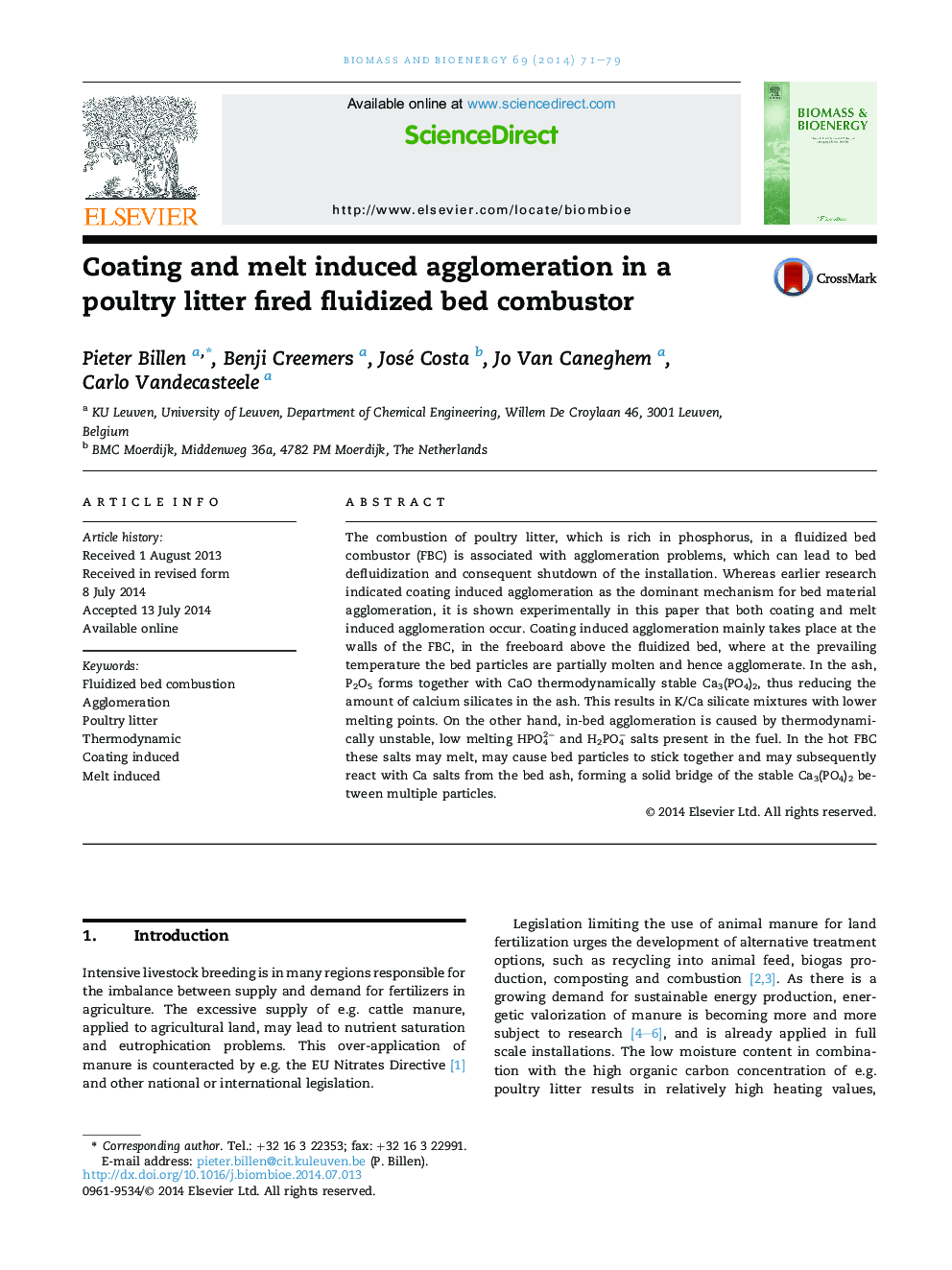| Article ID | Journal | Published Year | Pages | File Type |
|---|---|---|---|---|
| 7064298 | Biomass and Bioenergy | 2014 | 9 Pages |
Abstract
The combustion of poultry litter, which is rich in phosphorus, in a fluidized bed combustor (FBC) is associated with agglomeration problems, which can lead to bed defluidization and consequent shutdown of the installation. Whereas earlier research indicated coating induced agglomeration as the dominant mechanism for bed material agglomeration, it is shown experimentally in this paper that both coating and melt induced agglomeration occur. Coating induced agglomeration mainly takes place at the walls of the FBC, in the freeboard above the fluidized bed, where at the prevailing temperature the bed particles are partially molten and hence agglomerate. In the ash, P2O5 forms together with CaO thermodynamically stable Ca3(PO4)2, thus reducing the amount of calcium silicates in the ash. This results in K/Ca silicate mixtures with lower melting points. On the other hand, in-bed agglomeration is caused by thermodynamically unstable, low melting HPO42â and H2PO4â salts present in the fuel. In the hot FBC these salts may melt, may cause bed particles to stick together and may subsequently react with Ca salts from the bed ash, forming a solid bridge of the stable Ca3(PO4)2 between multiple particles.
Related Topics
Physical Sciences and Engineering
Chemical Engineering
Process Chemistry and Technology
Authors
Pieter Billen, Benji Creemers, José Costa, Jo Van Caneghem, Carlo Vandecasteele,
